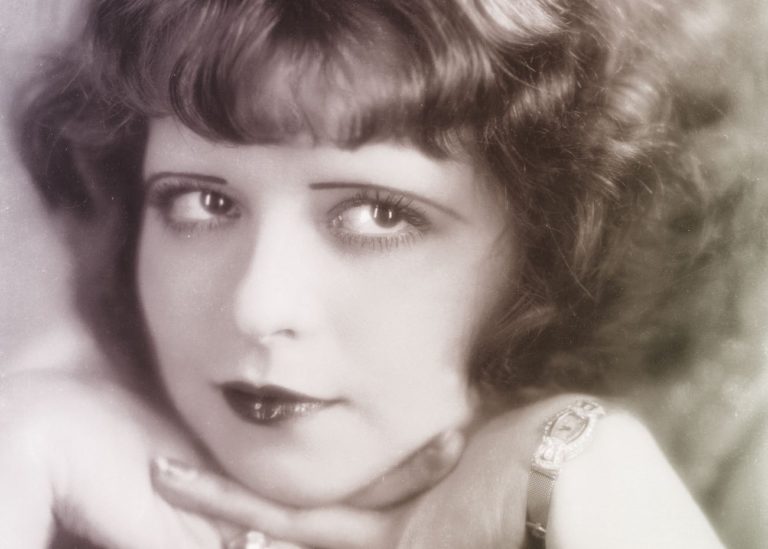
Almost a century ago, 95 years to be exact, a silent film directed by Clarence Badger defined a concept that still prospers: It. The resplendent Clara Bow, playing Betty Lou Spence, embodied the first “It Girl” in history and inspired that noteworthy quality that is withheld by today’s celebrities.
The “It” in present culture is called the “X-factor.” As Dino Everett — curator of the Hugh M. Hefner Moving Image Archive at the University of Southern California — has analysed in his essay, the 1927 picture “has become the quintessential vehicle representing the stars’ overall legacy.”
The one who popularised this idea was a British novelist and scriptwriter, specialised in romantic fiction and considered scandalous for her time: Elinor Glyn. She coined the use of the word it as an enchanting flair, that was often misquoted as a form of sex appeal. But in the film — adapted by her eponymous novella — it is clearly defined in all its complexity:
“IT is that quality possessed by some which draws all others with its magnetic force. With ‘IT’ you win all men if you are a woman — and all women if you are a man. ‘IT’ can be a quality of the mind as a physical attraction.”
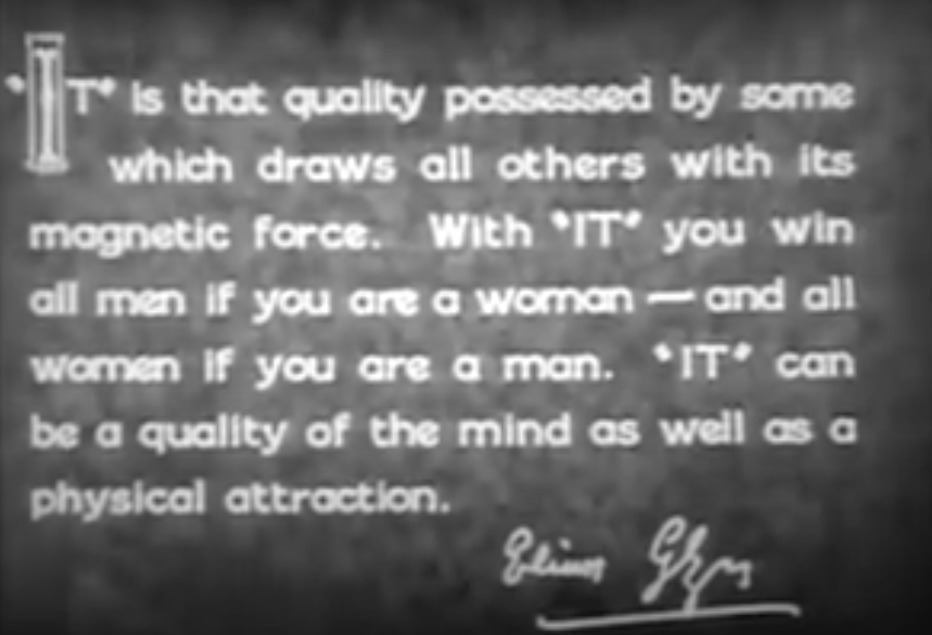
And further expands on the character traits by describing that:
“Self-confidence and indifference as to whether you are pleasing or not — and something in you that gives the impression that you are not all cold. That’s ‘IT’.”
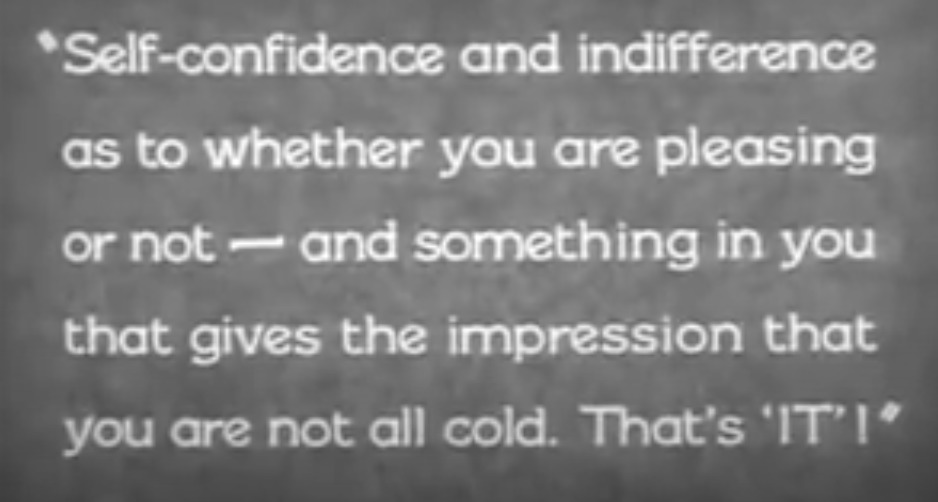
The authoress who came up with the notion of “It” stars as herself in the film, playing Madame Elinor Glyn, who is considered the arbiter elegantiarum. Hence, just like in reality, her character is the recognised authority on matters of social behaviour and taste. This bestowed great importance to the way Glyn publicly proclaimed that Clara Bow was the girl in Hollywood, that had “It”.
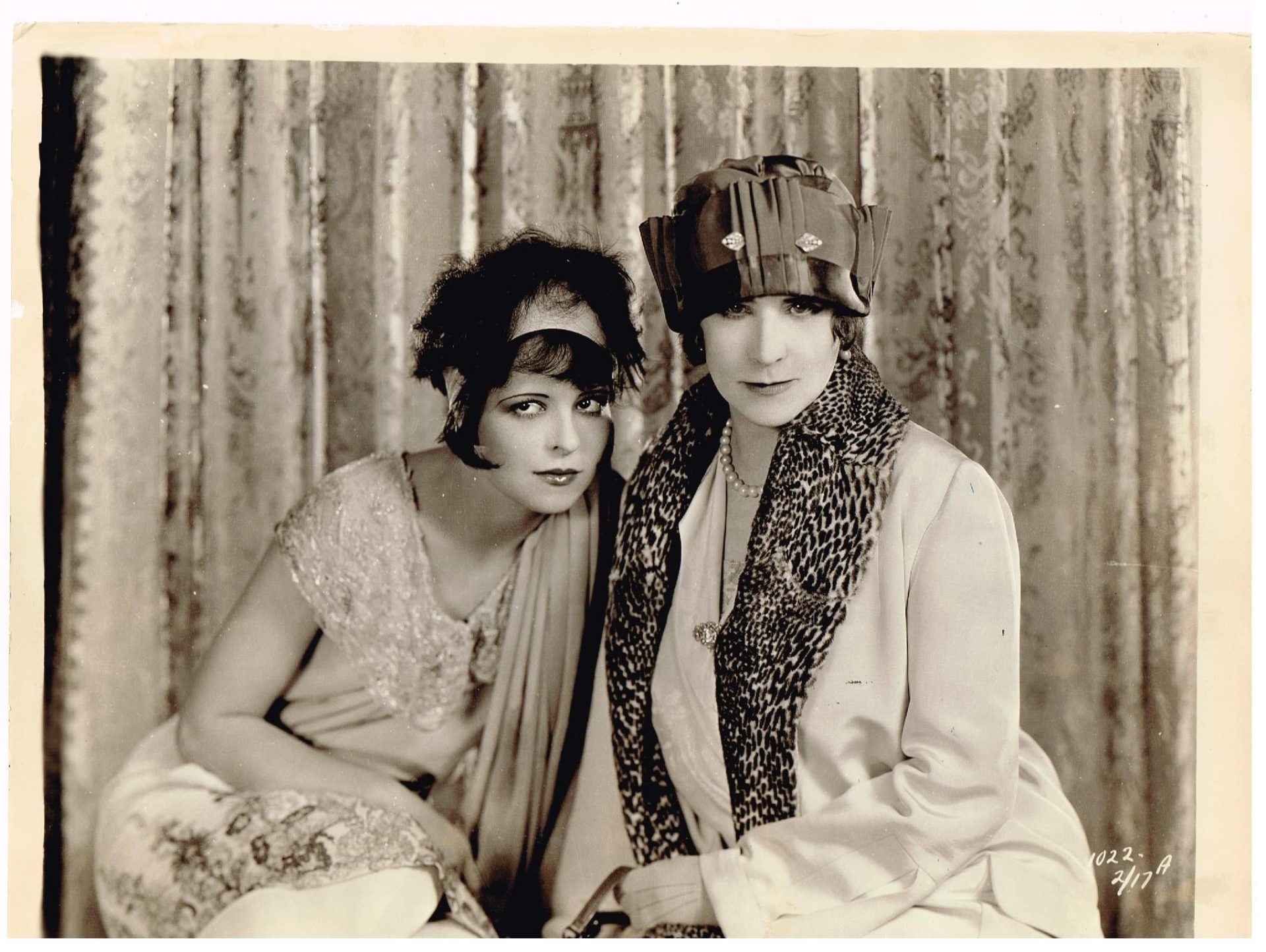
The American actress managed to stay on top throughout the transition from the silent films of the Roaring Twenties to the talkies of the Dirty Thirties. The period of social permissiveness was expressed by Bow’s eroticism that had a combination of wholesome ingenuity and droll wit, that prevented her from coming across as vulgar. As Alma Whitaker of the Los Angeles Times observed in 1924: “She radiates sex appeal tempered with an impish sense of humour…Her social decorum is of that natural, good-natured, pleasantly informal kind…She can act on or off the screen —takes a joyous delight in accepting a challenge to vamp any selected male — the more unpromising specimen the better. When the hapless victim is scared into speechlessness, she gurgles with naughty delight and tries another.”
All these qualities are palpable in the Cinderella story It from 1927. Clara Bow plays Betty Lou Spence, a department store clerk who sets her eyes on the owner of the retail establishment where she works: Cyrus Waltham Jr. (Antonio Moreno). One of his collaborators, “Monty” Montgomery (William Austin), is struck not only by Betty’s beauty but also by her je ne sais quoi…the “it.” The salesgirl relies on his sympathy to get closer to her love interest. Throughout her quest, a series of misunderstandings simply delay the much awaited happy ending between Betty and Cyrus.
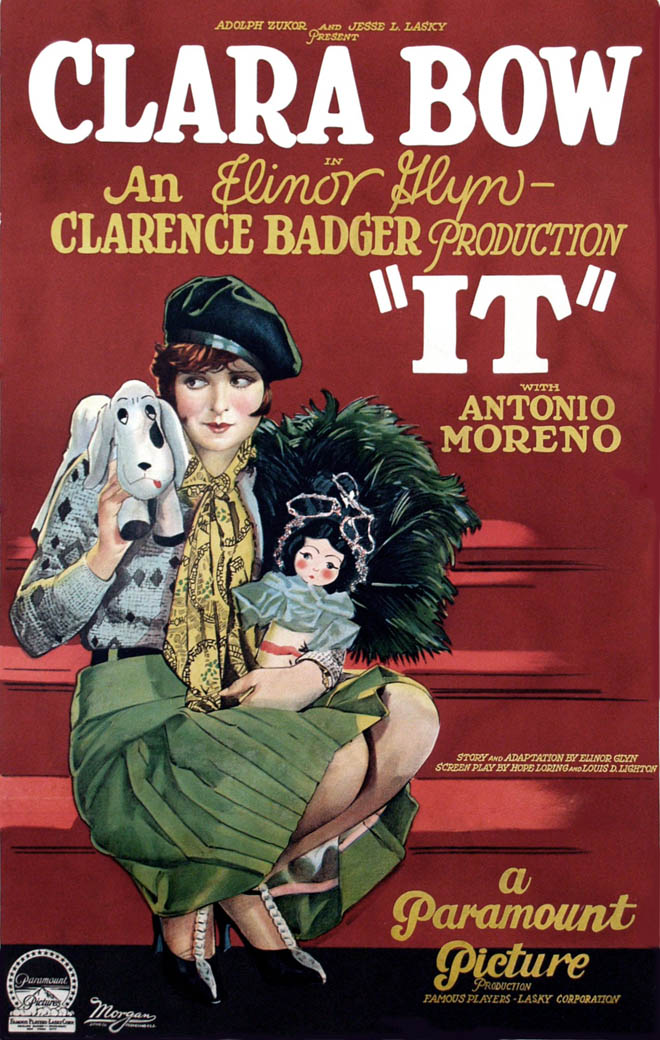
When the film was released, the role seemed tailored for Bow, since the actress possessed all the characteristics of her bewitching character. The picture is still looked upon to this day as one Clara Bow’s best performances and is often referenced as the enfranchisement of female emancipation and social class mobility. For instance, Betty Lou’s roommate Molly (Priscilla Bonner) portrays a struggling un-wed mother; whilst the working class protagonist gets the romantic upper hand over Adela Van Norman (Jacqueline Gadsdon) the socialite who wants to become Cyrus’ inamorata.
All in all audiences were swept in a tale that portrayed the change of an era.
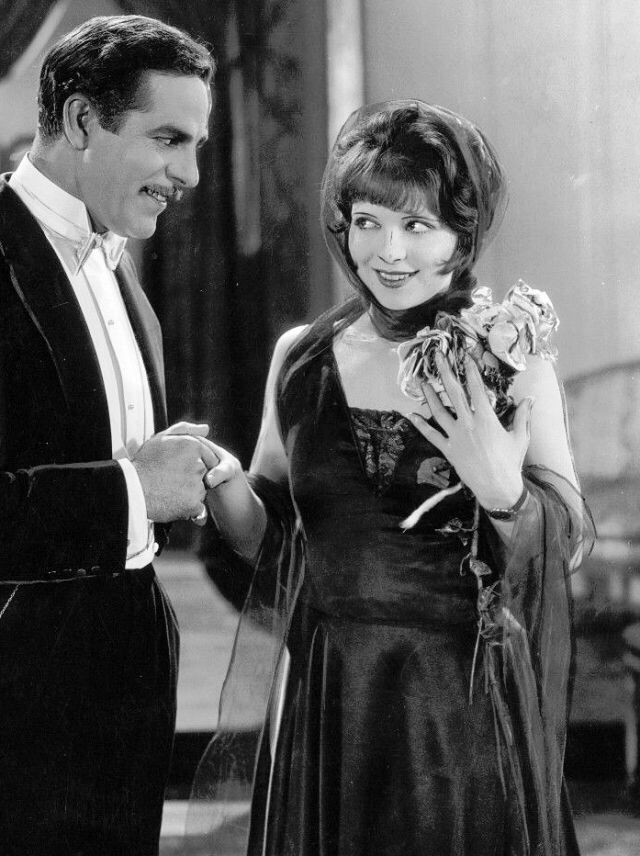
The “It Girl” has been a trend-setter ever since, a pre-cursor both in terms of style and worldview. The number of women who have later filled the shoes of Clara Bow in this mission are incommensurable. Vanity Fair even came up with a list of The “It Girls” Of Every Decade, that even precedes the time of release of Badger’s film. The 1900s feature Evelyn Nesbit, followed by Daisy Fellowes, Gloria Vanderbilt, and many others of the succeeding decemvirates, up to the current holder of the title: Gigi Hadid.
In modern times the term has often been misused for what is glitzy and iconic, but the true essence of its meaning can be found in the actual life story of the woman who first possessed the “It.” Similarly to the character she played — if not more — Clara Bow was the personification of resilience. She was the youngest of three siblings and the only one to survive past childhood. Her father was sexually abusive, while her mother suffered from severe mental disorders, even putting at risk her daughter’s life.
Clara experienced firsthand the classic rags-to-riches story. Bow hustled for auditions and roles, and worked relentlessly. In about a decade she appeared in 57 films, 46 silent and 11 talkies. Born in the most brutal poverty, she managed to conquer her star on the Hollywood Walk of Fame, whilst navigating the media scrutiny and gossip about her private life. The actress struggled her entire existence with her past traumas, that often jeopardised her mental health. Nonetheless she succeeded in creating a family and becoming a great example of a self-made woman. Not only did she become representative of the flapper girl in her day, but still constitutes a role model for young females of the 21st century. Clara Bow championed nonconformity and independence, as she claimed herself, “In my era, we had individuality,” and for this alone, she deserved to take a Bow.

